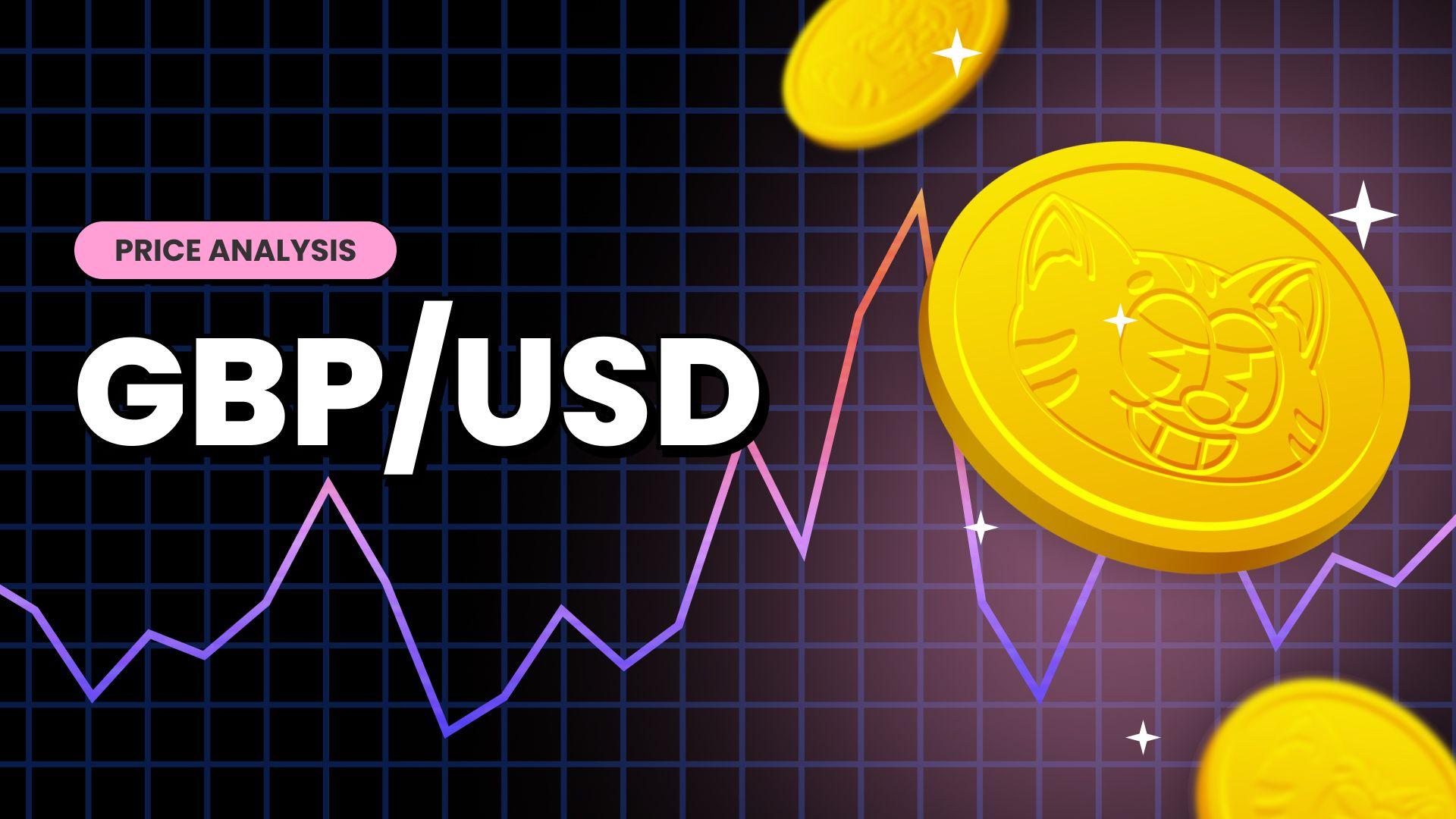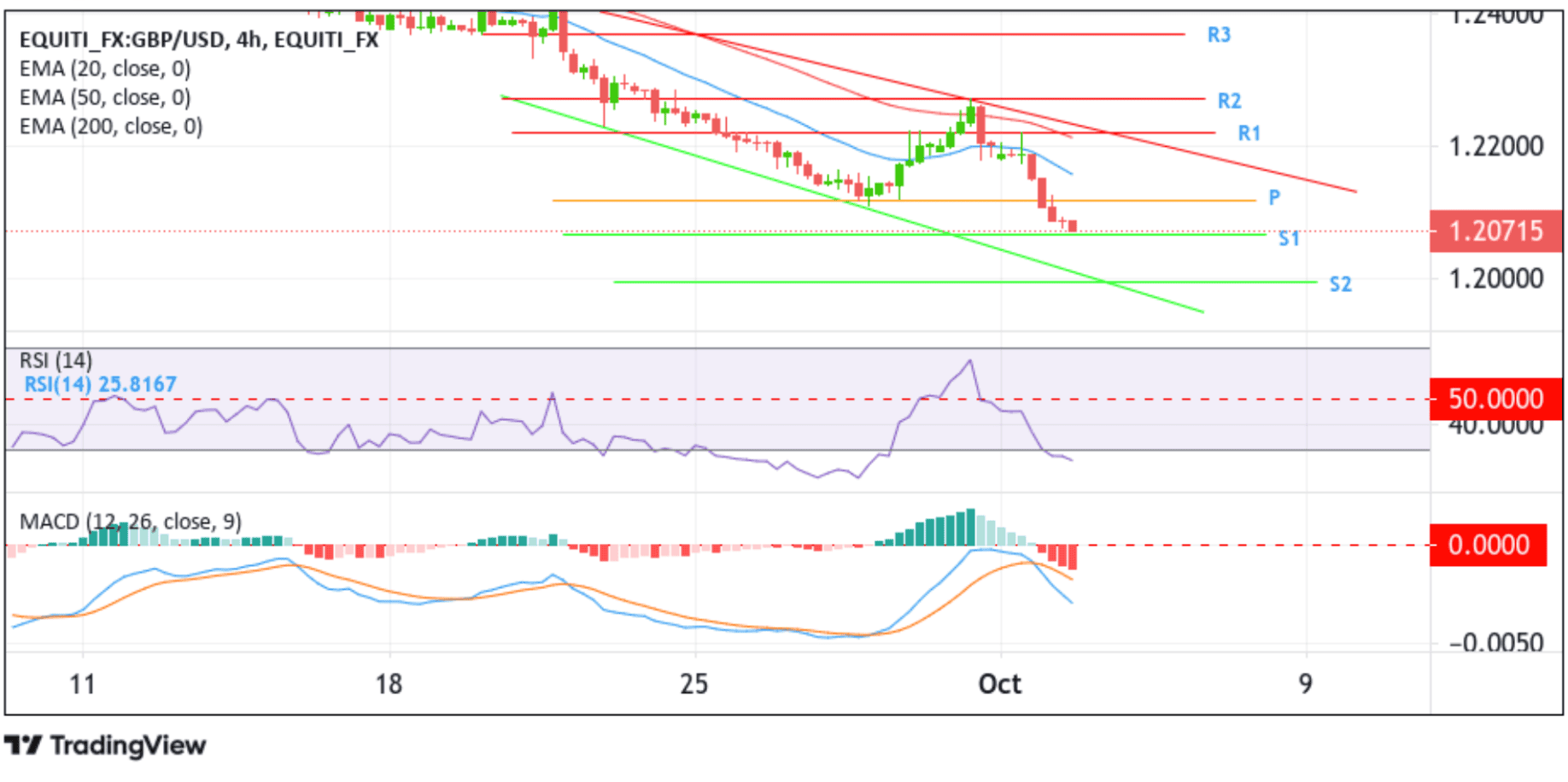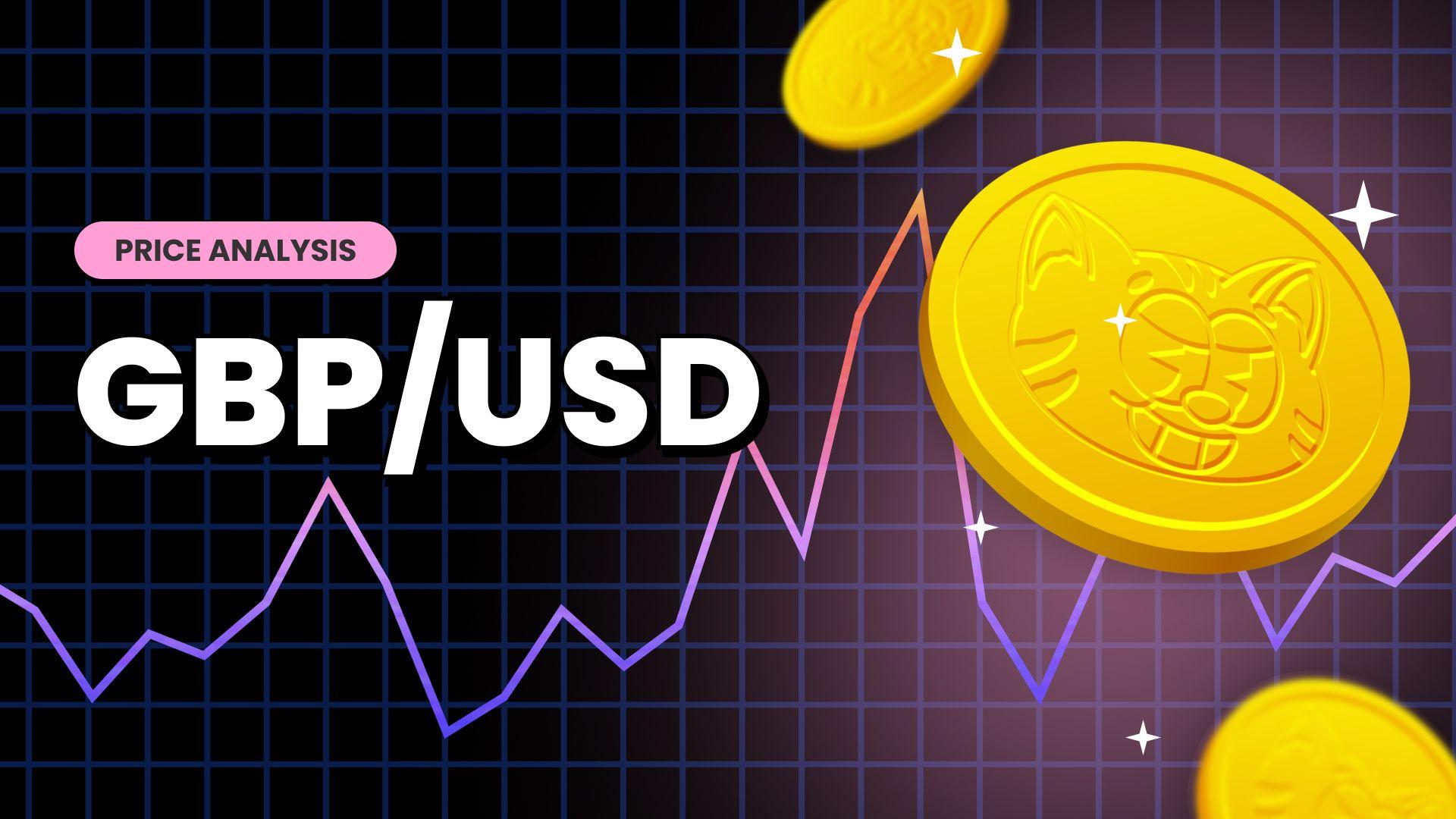GBP/USD Drops To A Fresh Three-Month Low Below 1.20800 Mark Amid Stronger U.S. Dollar, U.S. JOLTS Job Openings Awaited






Key Takeaways:
- The GBP/USD dropped to a fresh three-month low below the 1.20800 mark, weighed by a generally stronger U.S. dollar
- Rising U.S. yields, supported by prospects of further monetary policy tightening by the Fed, underpin the greenback
- The Great British Pound (GBP) continues to be weighed down by the decision by the Bank of England (BoE) to pause its rate-hiking cycle
- Markets focus shifts toward releasing the U.S. JOLTS Job Openings (Aug) report for fresh GBP/USD directional impetus

GBP/USD pair attracted some selling on Tuesday during the Asian session. They extended the sharp rebound from the vicinity of the 1.22718 level touched on Friday, marking a second consecutive day of negative moves in the last five. The bearish momentum has dragged spot prices to a fresh three-month low below the 1.20800 mark amid the generally positive tone surrounding the greenback.
The ongoing rise in U.S. Treasury bond yields, bolstered by hawkish Fed expectations, assisted the U.S. dollar to rise to a fresh eleven-month high/107.127 on Tuesday, which in turn is seen as a key factor acting as a tailwind to the USD/CHF cross and helping exert upward pressure on the shared currency.
The odds for further monetary policy tightening by the Fed were cemented after Federal Reserve Bank of Cleveland President Loretta Mester, during a Q&A session before the 50 Club of Cleveland Monthly Meeting, said that higher rates are needed to ensure the disinflation process continues.
Mester comments come on the heels of another FOMC Member, Neel Kashkari, President of the Federal Reserve Bank of Minneapolis, who said on Tuesday that a soft landing for the U.S. economy is more likely than not but still pegged the probability at about 60% that the Fed "potentially" raises rates one more quarter of a percentage point and then holds borrowing costs steady "long enough to bring inflation back to target in a reasonable period of time."
That said, the generally positive tone surrounding the greenback has seen the Fed's preferred inflation gauge, Personal Consumption Expenditure (PCE) data, do little to change market expectations of a hawkish Fed, with CME's Fed Watch tool showing Fed fund traders have priced in a 26% chance for a 25bps November rate hike up from 18% last week. The U.S. core PCE price index rose 3.9% annually in August 2023, the least since May 2021 and in line with market expectations. Every month, core PCE prices increased 0.1%, less than forecasts of 0.2 %.
That said, the Great British Pound (GBP) continues to be weighed down by the decision by the Bank of England (BoE) to pause its rate-hiking cycle after 14 straight hikes, leaving its overnight lending rate at 5.25% during its September meeting amid cooler inflation in the U.K. and provided little hints of its intention to raise rates further. This, indeed, has dramatically dampened the mood around the cable to a greater extent. The better-than-expected U.K. nationwide HPI macro data released on Monday failed to support the cable.
The greenback, on the other hand, received some intraday boost after an Institute for Supply Management (ISM) report showed the U.S. ISM Manufacturing PMI rose to 49 in September 2023 from 47.6 in the previous month, well above market expectations of 47.8 to reflect the slowest contraction in the U.S. manufacturing sector in ten months. Despite the softened slowdown, the data still pointed to nearly one year's consecutive monthly contractions in U.S. factory activity, underscoring the impact of higher borrowing costs from the Federal Reserve.
As we advance, investors look forward to the U.S. docket featuring the release of the JOLTS Job Openings (Aug) report. Traders will further look for cues from FOMC member Raphael Bostic's speech during the early North American session.
Technical Outlook: Four-Hour GBP/USD Price Chart

From a technical perspective, the price's ability to find acceptance below the key support level (pivot level (P)) at the 1.21178 level supported the case for further southside moves. Some follow-through selling would drag spot prices toward the immediate support level at 1.20648. A clean break below this level would see the GBP/USD cross accelerate its decline toward the downward-sloping trendline extending from the September 21, 2023 swing lower low. A subsequent break below this support level would pave the way for a move toward the 1.20000 round mark, and in dire cases, the shared currency could extend a leg down toward the demand zone ranging from 1.18374 - 1.17971 levels.
All the technical oscillators (RSI (14) and MACD) on the chart are in the dip-bearish territory, suggesting continuing the bearish price action this week. However, RSI (14) at 25.8167 is in a highly oversold region, cautioning traders against submitting aggressive bearish bets and waiting for near-term consolidation moves before placing bets favouring the bearish trend. Nevertheless, the bullish thesis is firmly supported by the acceptance of the price below the technically strong 200-day (yellow) Exponential Moving Average (EMA) at the 1.24904 level.
On the flip side, if dip-buyers and tactical traders jump back in and trigger a bullish reversal, initial resistance appears at the pivot level (1.21178). Buying interest could gain momentum if the price pierces this barricade, paving the way toward tagging the 20-day EMA level at 1.21565, followed by the 50-day EMA level at 1.22168. Acceptance above these levels, followed by a break above the resistance level plotted by a downward-sloping trendline extending from the September 20, 2023 swing higher high, would pave the way for a near-term move toward the 1.22206 resistance level (R1). On further strength, the focus shifts to 1.22722 (R2), followed by 1.23707 (R3).
